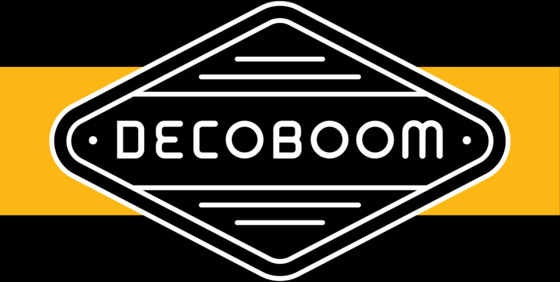 A little while back Andrew contacted me letting me know about Decoboom and his unique style of engraving pickguards. I haven’t seen very many custom engraved pickguards so I was naturally curious. WOW. What he’s doing at Decoboom, is what I call next level. His engraving are quite complex yet extremely elegant and work well the pickguard shape. I really thought he was on to something great, and wanted to learn more. I sent Andrew a few question about Decoboom…
A little while back Andrew contacted me letting me know about Decoboom and his unique style of engraving pickguards. I haven’t seen very many custom engraved pickguards so I was naturally curious. WOW. What he’s doing at Decoboom, is what I call next level. His engraving are quite complex yet extremely elegant and work well the pickguard shape. I really thought he was on to something great, and wanted to learn more. I sent Andrew a few question about Decoboom…
– What inspired Decoboom?
I’ve always been obsessed with vintage guitars and other consumer products of the 40s and 50s, and I went on a collecting frenzy several years ago. It started with guitars, but I also began finding all sorts of amazing midcentury products that used plastic in amazing ways, like my old Webcor reel-to-reel machine, which has clear acrylic that is cast or engraved with amazing designs and hand-painted from the back. It was this reverse-painted method that really caught my eye.
Soon I noticed that this reverse painting technique on acrylic was also used on the original Gretsch pickguards, where the logo would pop out into the guard. Kay had the Kelvinator headstocks as well, and of course a lot of lapsteels used acrylic over the fingerboards with laminated, cast, and engraved design elements incorporated into the plastic.
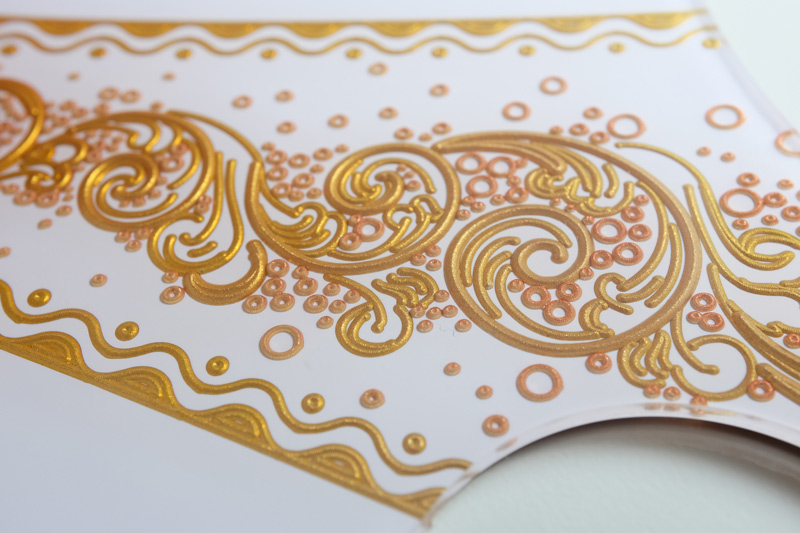
There is something very punk-rock about the midcentury era of manufacturing and design-where amazing craftsmanship and design elements were used to make common consumer goods out of something as “cheap” as plastic. Plastic was the new, cool, space-age thing at the time, and they really cared about making it awesome.
These days we tend to associate plastic with something that is disposable-but hopefully my work will challenge this idea, and challenge the idea that expensive materials necessarily equate to quality, care, or artistic vision.
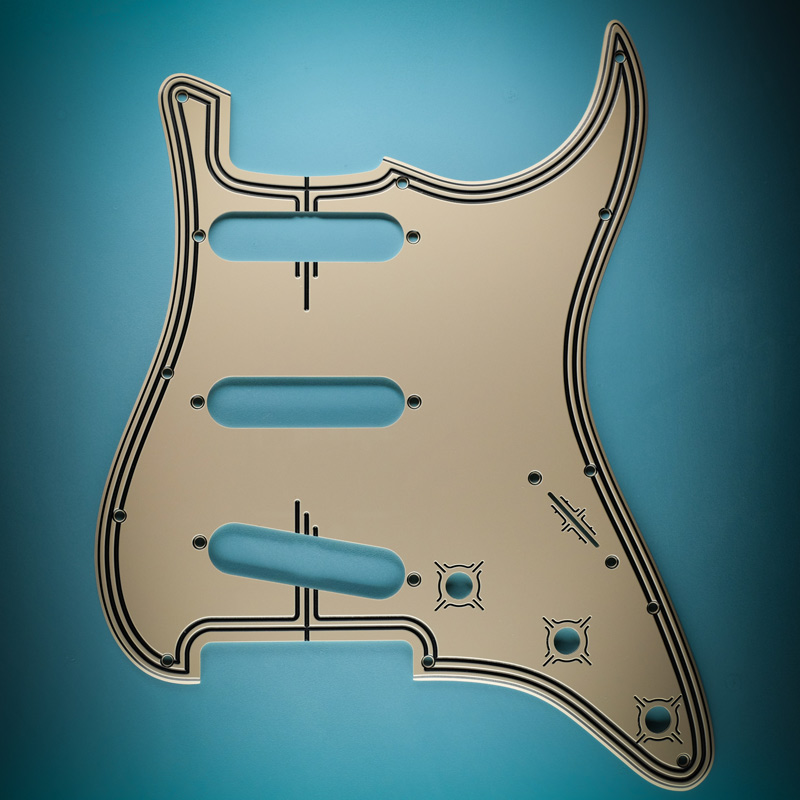 Ultimately that’s what I’m doing with Decoboom: While the rest of the boutique guitar world is fretting over where to source AAAAAA flamed maple, or how to get an extra nanosecond of sustain out of the guitar body, I’m spending a whole lot of time and care over that little chunk of plastic that has graced guitars since the beginning. Yes, it’s crazy. Thankfully, people are really responding, because I think people want to feel like that little kid in the pawn shop again, where before they even worried about “woman tone,” or infinite sustain, or spalted maple, they just stared at the red guitar hanging there, daring them to play it. Visual appeal does matter, and it doesn’t have to be expensive or snooty; it can also resonate with that little kid on an allowance that’s a part of you, that still has you picking up the guitar every night looking for new art and inspiration to keep you going. Hopefully Decoboom can fuel some of that inspiration.
Ultimately that’s what I’m doing with Decoboom: While the rest of the boutique guitar world is fretting over where to source AAAAAA flamed maple, or how to get an extra nanosecond of sustain out of the guitar body, I’m spending a whole lot of time and care over that little chunk of plastic that has graced guitars since the beginning. Yes, it’s crazy. Thankfully, people are really responding, because I think people want to feel like that little kid in the pawn shop again, where before they even worried about “woman tone,” or infinite sustain, or spalted maple, they just stared at the red guitar hanging there, daring them to play it. Visual appeal does matter, and it doesn’t have to be expensive or snooty; it can also resonate with that little kid on an allowance that’s a part of you, that still has you picking up the guitar every night looking for new art and inspiration to keep you going. Hopefully Decoboom can fuel some of that inspiration.
– Where are you physically located?
I’m currently in Bakersfield, CA, but we are moving next month out to the Central Coast area of California.
– Do you create the designs for the pickguards?
I do the design work, and it’s a blast. I try to connect the designs with guitar and music culture, but I’m not committed to just one style. Most importantly, I spend a lot of time making sure the design “fits” with the aesthetic of these instruments that for the most part were designed in the 50s and 60s. This doesn’t mean that all my designs are inspired by those eras, but it does mean I owe a respect to that heritage.
– Do you offer custom design services (design provided by the customer)?
I’ll put your name on a guard and work with you on custom colors, but I find my best work comes from me taking artistic ownership of the project, rather than acting like the typical trophy shop down the street who engraves your cat-or whatever-on your pickguard. So I don’t generally do one-off design projects for customers. I do work with guitar builders on custom projects and prototyping for their guitars, and that’s some of my favorite work because of the collaboration. Unfortunately time and budget just doesn’t allow for collaboration with everyone.
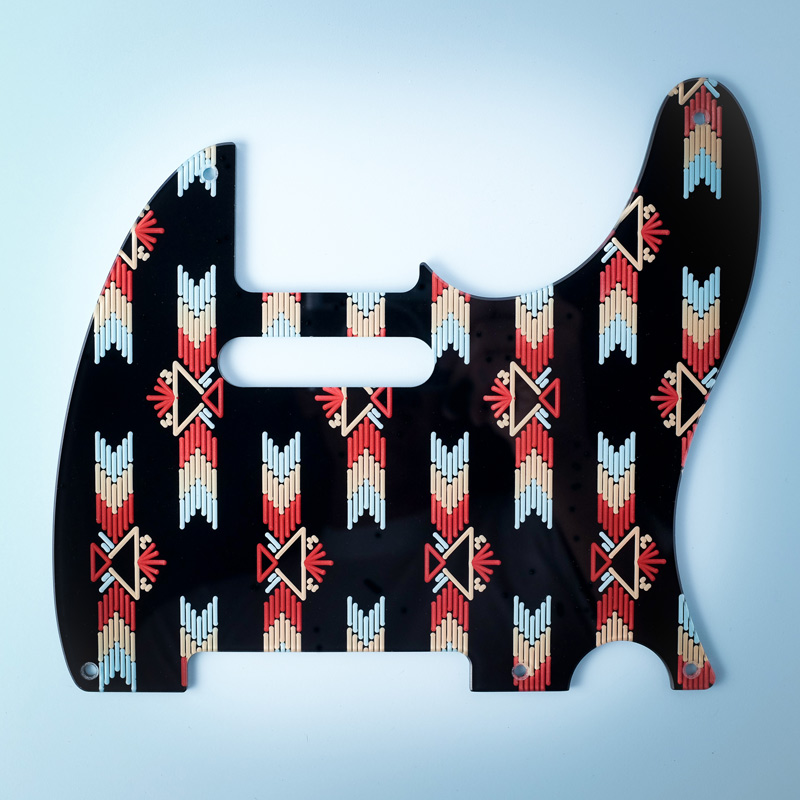 I should add that if you’d like to see a certain style of artwork done on a guard, please let me know. Chances are I’ve got something on my list for an area of design you’re interested in, and if you bug me about it I just might get to it sooner rather than later.
I should add that if you’d like to see a certain style of artwork done on a guard, please let me know. Chances are I’ve got something on my list for an area of design you’re interested in, and if you bug me about it I just might get to it sooner rather than later.
– What pickguard material do you use?
All my materials come from fantastic suppliers here in the US, and for all the engraved work I use a modified acrylic material that is extremely durable, and offers the perfect amount of flexibility for pickguards. Most acrylic pickguard materials I’ve seen on the market are too rigid and brittle for pickguards and they are prone to cracking over time. My materials engrave and cut cleanly, and hold up to the rigors of guitar tomfoolery. I also offer standard pickguard materials-i.e. mint, parchment, bakelite, and tort, for those of you that want a more traditional look.
– How often do you add new patterns?
I send out a newsletter about every month with new designs. I’m committed to growing my design library, and even though it’s an insane amount of work to keep coming out with new stuff, it’s what I love most about this job.
– Do you offer offset guitar pickguards (Jazzmaster, Jaguar, etc)?
Offsets rule! I’ve done several funky jazzmaster and jaguar guards. Mustangs are also available. Speaking of which, I’ve got an old ’65 mustang I’m restoring with dearmond gold foils and a great new burgundy mist and gold pickguard pattern that has yet to be revealed . . .
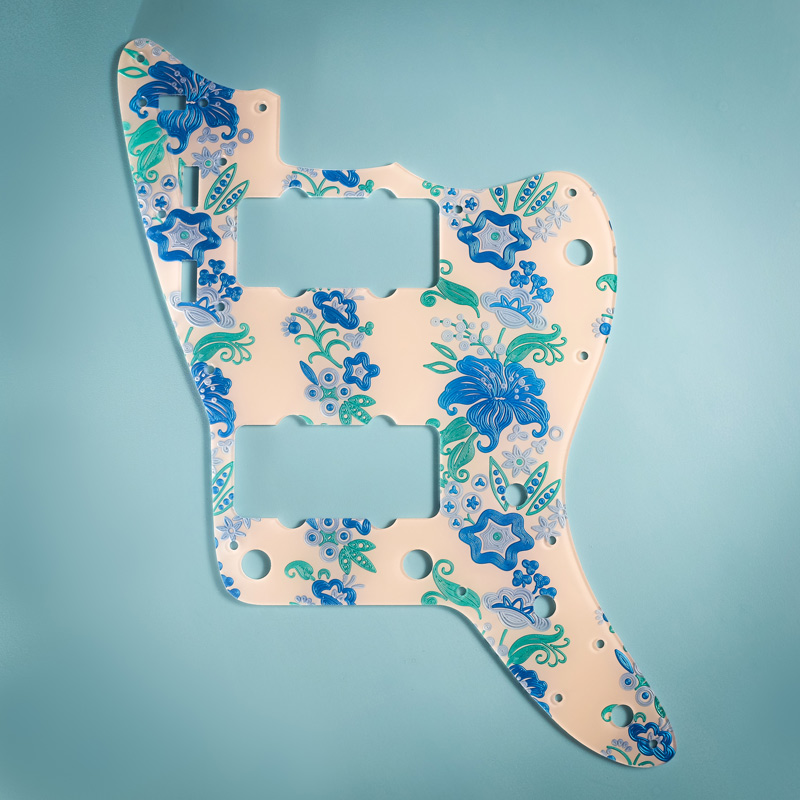
– Are the pickguards painted, etched, CNC’d etc? How do you make the designs?
I engrave the guards using a CNC either from the front or the back. Some of the designs have thousands upon thousands of little vector lines to be programmed in, and I have to do that by hand, one by one. There are no shortcuts with this, even though it’s computerized.
Once the programming is done, I engrave. Some of the guards are engraved from the front with a 3-ply material-where if it’s white on top, the design gets engraved into the middle black layer. I then cut the guard out with the beveled edge so it looks like a traditional 3-ply design, but with the engraved design.
The second type is more complicated. I engrave these guards from the back into a clear acrylic layer, and then paint them from the back, sometimes with multiple layers of color. It’s a very time-intensive process, but it gives the engraved elements a real dimension. Instead of seeing the engraving as a “valley,” it appears as a “mountain” emerging out of the pickguard, but protected by the clear acrylic material in front of it. When you look at these designs, it looks like they are floating in the plastic.
All of these are pieces of art that will last forever because they are engraved, and the painted elements are totally protected from the elements.
Finally I cut the guards using the CNC, so that each guard comes out dead-on accurate every time. It doesn’t do much good to anybody to have a beautiful pickguard that doesn’t fit consistently!
– Can people provide you with their own pickguards?
Yes, when necessary they can send me their pickguard, a good tracing, or a high resolution scan so I can reverse engineer the guard. I’ve done several vintage restoration jobs where someone had a broken pickguard from the past and they couldn’t find a replacement, but we were able to reverse engineer the guard with what pieces we did have.
– Is there a template that customers need to fill out if the pickguard required has custom control placement, etc.?
I provide several dropdown boxes for common pickguard options on the website, but if someone needs more custom work done all they need to do is email or call and I’ll take care of them.
Please be sure to check out Decoboom and see more examples of Andrew’s work. Also like them on Facebook. Let me know what you think about Decoboom by commenting below!

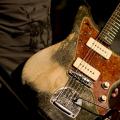
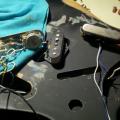
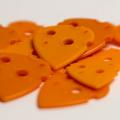

Leave a Reply